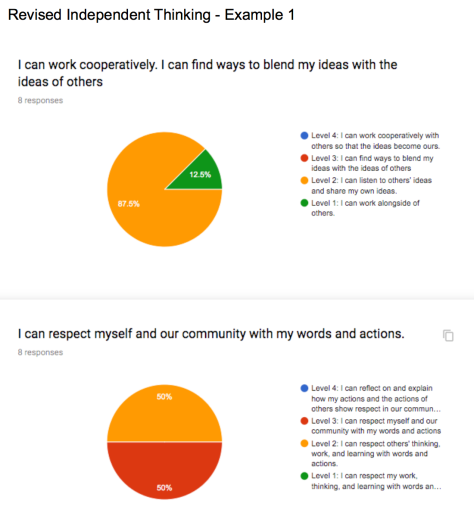Continuing our work from last month, Trinity School’s Assessment Committee continues to grapple with the following questions.
As a team, how are we united (aligned) in our understanding and assessment of learning? How might we grow our assessment literacy, understanding, and actions to focus on learning, assign competence, and empower learners to become agents of learning?
Under the leadership of Thomas Benefield (@yerlifeguard) and Becky Holden (@BHolden86), Trinity School’s Assessment Committee we continue our commitment to read and take action on Developing Assessment-Capable Visible Learners, Grades K-12: Maximizing Skill, Will, and Thrill by Nancy Frey, John Hattie, Douglas Fisher.
Below is our agenda for the April meeting where we have begun to grapple with growing our understanding together.

As a team of teachers representing all grade-levels at our school, we chose to analyze student work together and hold a norming meeting to explore and learn one way to help our grade-level teams calibrate and clarify expectations around collaboration and citizenship.
To ensure that all voices were heard, we started with quiet reading time to preview the draft of the learning progressions. As we did last month, we used a Google form (shown below) to record everyone’s initial thinking around the level of work based on the drafted learning progressions for Working Cooperatively and Displays Respect.
The artifact, in this case, was a two minute video that offers a glimpse of partner work. (The video is not shared in this post, but a screen shot of one second is shown below.)


Using the Google form continues to be critically important. Everyone’s initial thinking was made visible to the team. Look at the results from our initial thinking.

As you can see, we were all over the place in our interpretation of the meaning and expectations described in our learning progressions.
As a team of assessment leaders, we had anticipated this result. You can see how this might be problematic for students in different sections with different teachers, right?
High-functioning teams that focus on learning must calibrate their understanding of what is essential to learn so that all students are assessed fairly and equitably.
What happened next was nothing short of magical.
First, we discussed our leveling with one partner to explain our reasoning and understanding. It was quiet, calm, and intense. As partners listened to each other, different interpretations and points of view were represented. When enough time passed, we returned to the whole group setting and discussed. Again, magical! Everyone confidently shared their initial level assessment and then spoke of how their understanding was shifted by discussing it with someone else.
Then, we took time for individual reflection and leveled the same artifact again, based on our developing common assessment. Just look at the results.

Closer, so much closer to common understanding.
To hone our skills and understanding, we used the same two learning progressions for Works Cooperatively and Displays Respect using video from a different grade level. (The video is not shared in this post, but a screen shot of one second is shown below.)




Again, more closely aligned understanding.
What can be gained when all ideas are made visible to the entire team? How might we learn and grow together by sharing our thinking, seeking feedback, and calibrating with our team?
How do your school’s teams calibrate expectations, shared values, and common understanding?
What actions will we take to become stronger and clearer as a team?
Frey, Nancy, et al. Developing Assessment-Capable Visible Learners, Grades K-12: Maximizing Skill, Will, and Thrill. Corwin Literacy, 2018.